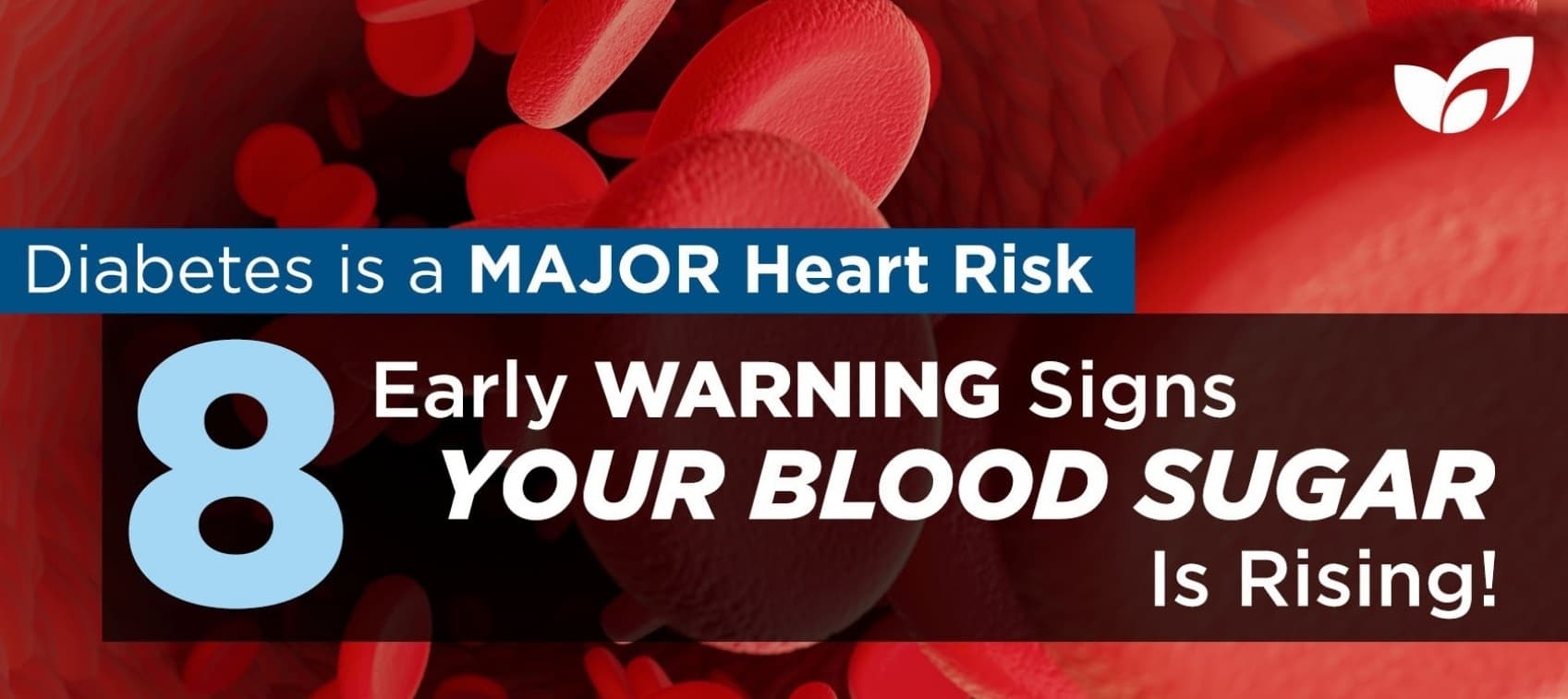
As you know, there’s a strong connection between diabetes and heart disease. According to the American Heart Association, having diabetes can double (or even quadruple) your risk of dying from heart disease. And people 65 years or older with diabetes are at least 68% more likely to die of heart disease than the general population, and 16% more likely to die of a stroke.
How Does Diabetes Affect the Heart?
Many people think of diabetes and heart disease as two separate conditions, but they're closely related. The most common problem is atherosclerosis—the hardening of the arteries that usually starts before full-blown diabetes is diagnosed. The accumulated plaque typical of atherosclerosis can rupture or break apart, causing blood clots and blockages that can lead to either a heart attack or a stroke.
Additionally, when the body becomes resistant to insulin, there is a corresponding increase in inflammation in the body—which, in turn, contributes to a decline in cardiovascular health. In other words, heart disease almost always starts to develop during the pre-diabetes stage known as “insulin resistance.” In fact, diabetes is one of the most significant risk factors for cardiovascular disease.
8 Warning Signs You Could Be Developing Diabetes
Because of the serious health problems that can develop from insulin resistance and type 2 diabetes, it’s important to know the warning signs to look for:
- Dry mouth
- Increased thirst
- Frequent urination
- Increased hunger (particularly after you’ve already eaten)
- Feeling weak or tired
- Blurred vision
- Headaches
- Loss of consciousness (this is a rare sign)
Plus, there are three key signs that can also tell you that you are headed toward developing diabetes:
- Your Blood Pressure Increases: Insulin promotes smooth-muscle growth in blood vessel walls, which then contributes to the formation of plaque. The buildup of plaque causes arteries to thicken and become rigid. Blood pressure then rises because more pressure is needed to force blood through arteries that have become stiff and narrow due to excess insulin. Additionally, excess insulin can cause blood vessels to go into spasm.
- You’re Gaining Weight: As a result of the body’s ineffective use of blood glucose, carbohydrates get stored as fat.
- You Have an “Apple Shape”: If you’re a woman whose waist measures 36 inches or more, or a man whose waist measures 40 inches or more, that’s one of the indications of metabolic syndrome. This widely prevalent but symptomless condition often precedes the development of type 2 diabetes and heart disease.
The Good News Is You Can Prevent (and Control) Diabetes, Naturally
If you suspect your blood sugar is going up, ask your doctor to order a hemoglobin A1C blood test, which is like doing three months of finger stick tests, all at one time. If your HbA1C is above 5.9 it’s an early warning sign that you could soon develop diabetes. Another red flag that you could soon develop diabetes is if your HDL “good” cholesterol numbers are down and your triglyceride levels are elevated.
The good news is that even if you’re in the “diabetes warning zone” you can knock it out before it develops. Plus, if you already have diabetes, the exact same steps can work to help you control your blood sugar.
- Lose Weight: Shedding extra pounds is the single most effective way to keep diabetes at bay. To help stabilize your blood sugar and lose unwanted pounds, you want to lower your carbohydrate intake, including avoiding products made with white flour and sugar. If you want to sweeten your coffee or tea, add ribose which is sweet but has a negative glycemic effect. Plus, add blood sugar-stabilizing healthy proteins to your diet including organic eggs, wild salmon, buffalo, organic chicken, and lamb.
- Eat These 5 Foods: Avocados, nuts (macadamia nuts, walnuts, and almonds), chickpeas, lentils, and broccoli require very little insulin for your body to process. Plus, they help to slow the release of glucose into your bloodstream.
- Exercise Your Way Out of Trouble: Daily exercise, such as 30 minutes of brisk walking, helps you shed extra pounds and build muscle. Having more muscle helps your insulin receptors to function far more efficiently. Don’t like to walk? Yoga, Pilates, tennis, and golf (without a golf cart) are great options as well. The best exercise you can do is one that you enjoy and will do regularly.
- Take Blood Sugar Supporting Nutrients: Cinnamon helps to support insulin sensitivity and function. I recommend eating ½ to 1 teaspoon of cinnamon a day. Gymnema Sylvestre extract (300 mg daily) slows the release of glucose into your bloodstream. You can also help to protect against the oxidation of excess blood sugar with alpha-lipoic acid (ALA) (100 to 300 mg daily).
Plus, there are two other supplements that have impressive results when it comes to keeping blood sugar levels steady. Crominex 3+ is a clinically studied, highly stable form of chromium. Crominex supports glycemic control by helping your body process glucose and supporting insulin sensitivity. I recommend 400 mcg daily.
Berberine (500 mg, 2 to 3 times a day) is a plant alkaloid that has been used for centuries in Chinese and Ayurvedic medicine. Berberine targets a regulator of metabolism called activated protein kinase (AMPK). For people with diabetes, this means better glucose uptake into cells, improved insulin sensitivity, and reduced glucose production.


